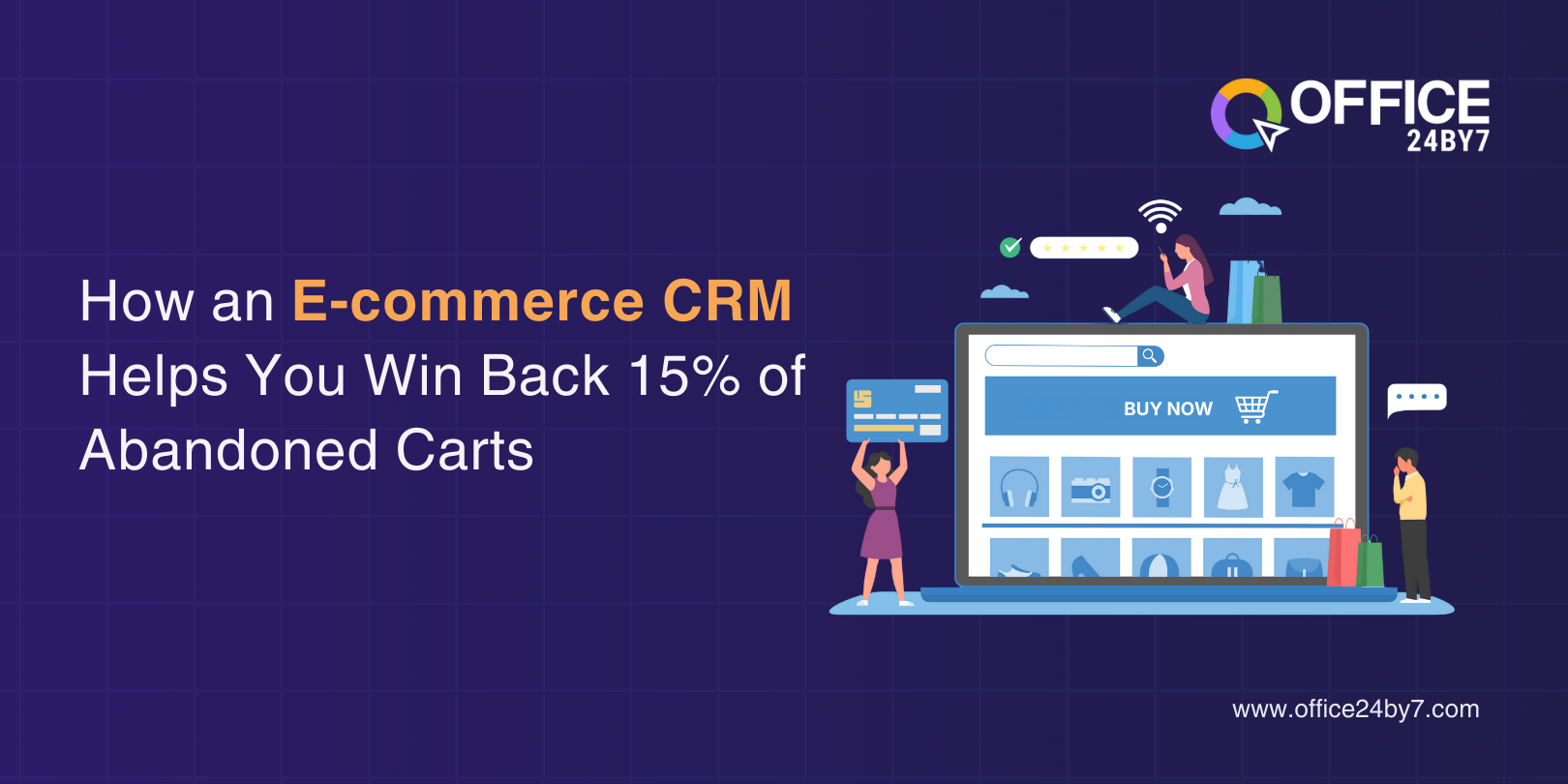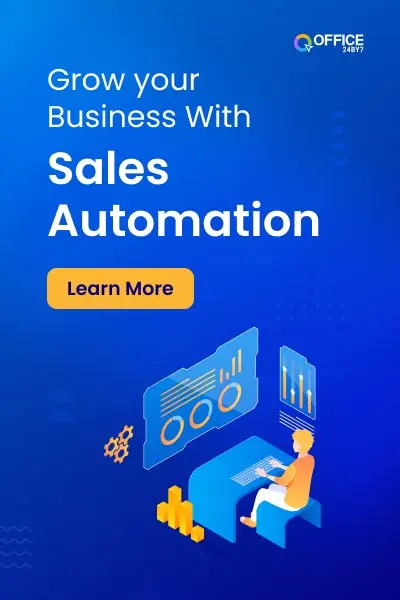
Not sure if this blog on Sales CRM contains quality information?
Try our 1-minute short audio summary to decide. 🎧
Making a case for a new technology investment always comes down to one thing: return on investment (ROI). For sales leaders, adopting a Sales CRM is now not merely about updating procedures; it’s about achieving quantifiable financial outcomes. However, numerous companies either undervalue or do not accurately measure the complete worth a CRM can offer.
In a competitive sales environment, it’s vital to comprehend how your CRM influences your revenue, efficiency, and customer loyalty. This understanding can assist you in viewing your CRM as a significant growth asset instead of merely an expense. This blog will guide you on calculating, monitoring, and enhancing the ROI of your CRM setup, making sure that every rupee or dollar invested results in measurable growth.
Why ROI Matters in Your Sales CRM Decision
Companies can synchronize their CRM approach with overarching objectives, ensuring that every dollar invested results in increased revenue, enhanced efficiency, and improved customer satisfaction.
Why Businesses Often Overlook ROI
Numerous organizations acquire a CRM solely based on its features, such as task management, without considering how those features will generate quantifiable benefits. This frequently leads to idle modules, elevated subscription fees, and lost chances to enhance sales performance. A targeted ROI strategy prevents this by connecting every feature to a business result, like higher conversions or diminished lead loss.
Leaders can justify expenditures by calculating ROI, demonstrating the anticipated payback duration, and assessing if the CRM functions as a revenue generator instead of a cost burden. This method also fosters responsibility throughout the sales team, as everyone comprehends the purpose of the tool and the criteria for evaluation.
Understanding the ROI Implementation
Essentially, ROI for a CRM assesses the financial and time benefits you receive relative to the financial and time investments you make. This is not solely about finalizing more transactions; it also involves conserving time, minimizing mistakes, and accelerating better decision-making. A CRM that provides precise forecasts or quickly retrieves client histories is conserving time, which positively affects profitability.
Tangible and Intangible Returns
Tangible benefits consist of quantifiable outcomes such as higher sales, decreased lead loss, and enhanced conversion rates. Intangible benefits, such as enhanced customer relationships, streamlined collaboration among departments, and increased brand loyalty, are more difficult to quantify but often generate considerable long-term financial worth.
Why Measuring ROI Is Critical
Without tracking ROI, businesses face the danger of paying for unused features or losing opportunities to utilize tools such as Missed Call serviceservice tracking, and interactive sales dashboards that can enhance performance. Monitoring ROI simplifies the decision-making process regarding which features to enhance, which to eliminate, and where to allocate training resources for improved outcomes. It also ensures that every investment directly supports sales growth instead of becoming an unused expense. Over time, consistent ROI tracking builds a clear picture of how the CRM contributes to both short-term wins and long-term business stability.
Key Cost Components of a Sales CRM Implementation
Before you can calculate the ROI of a Sales CRM, you need a clear understanding of the costs involved. Many businesses focus only on subscription fees, but the total cost of ownership goes far beyond the monthly invoice.
From setup and training to integrations and potential downtime, each element plays a role in the overall investment. By identifying and planning for these costs upfront, decision-makers can set realistic ROI expectations and avoid budget surprises later on.
Direct Costs of Deployment
Direct costs are typically the simplest to assess, including subscription fees (often billed per user or tier), onboarding programs, training sessions, and integration tasks. An intelligent option is a CRM that incorporates Call Center Solution features within the same bundle. This removes the expense of using several platforms and simplifies the management of unified systems.
Hidden and Indirect Costs
These are the costs that many leaders overlook. Preventing delays, reducing efficiency during the transition period, or losing opportunities due to slow adoption can gradually lower ROI. Choosing a platform with an easy-to-use interface and built-in Virtual Number features can mitigate these risks by providing smooth communication during the transition.
Revenue-Generating Benefits of a Sales CRM
A properly executed Sales CRM not only arranges data but also effectively boosts revenue. By increasing lead conversions, elevating productivity, and improving customer retention, it serves as a direct catalyst for growth.
Ways a Sales CRM Enhances Lead Conversion Rates
A major effect of a CRM is on conversion rates. When sales representatives can view each lead’s position in the pipeline, receive automated alerts, and employ lead scoring to prioritize the top opportunities, fewer prospects are lost. Companies that implement CRM typically experience an increase in sales revenue of up to 29%. Voice broadcasting features simplify the process of contacting numerous leads simultaneously, boosting the chances of converting interest into sales.
Enhancing Sales Team Efficiency with a Sales CRM
Automation transforms the landscape. Rather than spending hours on manual data entry, sending repetitive emails, or looking for information, sales representatives can concentrate on selling. Centralized Task Management tools ensure that everyone is aware of their upcoming tasks, deadlines are adhered to, and no task is overlooked. With time, this ongoing structure leads to significant increases in productivity.
Enhancing Customer Loyalty
Retention often incurs lower costs than acquisition, and a proficient CRM streamlines the task of fostering customer interaction. Recording every interaction enables truly personalized follow-ups and ensures that no client feels neglected. Trustworthiness builds assurance, and assurance leads to returning clients and increased lifetime value.
Utilizing marketing automation features in the CRM enables companies to deliver timely notifications, exclusive deals, and tailored messages that maintain customer engagement. Gradually, these steady, considerate exchanges transform occasional customers into devoted brand supporters.
Metrics to Quantify ROI
Measuring ROI isn’t just about gut feel; it’s about tracking the right numbers that prove your CRM is driving growth. The following metrics give you a clear, data-backed view of your Sales CRM’s true impact.
Essential Financial Indicators for Return on Investment
Financial metrics provide the clearest view of profitability. Examine revenue before and following CRM implementation, your Customer Acquisition Cost (CAC), and your Customer Lifetime Value (CLTV). Collectively, these metrics indicate if your CRM is assisting you in acquiring more clients, retaining them for extended periods, and enhancing their worth to your company.
Performance Metrics for Operational Sales CRM
Operational information holds equal significance. Monitor the speed of lead contact, the duration needed to finalize deals, and the number of opportunities each representative is managing. Using SMS Broadcasting in your CRM allows you to instantly view engagement rates and link them directly to new sales.
Metrics for Adoption and Usage of Sales CRM
Regardless of how sophisticated your CRM may be, it won’t provide a significant ROI unless your team engages with it actively. Adoption transforms a robust system into a genuine sales resource.
Begin by monitoring daily and monthly active users. This indicates whether the CRM is integrated into your team’s daily activities or merely used occasionally. Uniform use among all representatives is an obvious indicator of strong adoption. It’s important to assess the rates of feature usage. If your CRM provides automation, click-to-call, and WhatsApp Bot features, but your team only records contacts, you’re overlooking chances. Maximizing ROI is achieved by utilizing the complete range of features.
Finally, collect information via internal satisfaction surveys. These show what’s effective, what’s annoying, and what skills development could assist with. When both adoption and satisfaction rates are elevated, ROI naturally ensues.
A Marketing Automation Tool
makes all the difference!

How to Maximize the ROI of Your Sales CRM
To maximize the ROI of your CRM, you need to implement it strategically, ensure user adoption, and continuously optimize it in line with your business objectives.
Effective Strategies for Successfully Implementing a Sales CRM
Begin by aligning your CRM with your existing sales process. Don’t compel your team to operate unnaturally; instead, customize the CRM to align with their existing workflow. Early participation from sales representatives fosters commitment, while integrating tools such as automated Up/Cross-selling guarantees revenue effects from the outset.
Sales CRM Training and Strategy for Adoption
Retention often requires less investment than acquisition, and a powerful CRM streamlines the process of sustaining customer involvement. Recording every interaction enables truly personalized follow-ups and ensures that no client feels neglected. Dependability builds trust, and trust leads to returning clients and increased long-term value.
Utilizing automation features in the CRM, companies can dispatch timely alerts, exclusive deals, and tailored communications that maintain customer engagement. Gradually, these steady, meaningful engagements transform occasional customers into dedicated supporters of the brand.
Ongoing Enhancement through Sales CRM Analysis
A CRM is an evolving system. Leverage its analytics to spot trends, test new strategies, and improve campaigns. Platforms with built-in Inbound Marketing automation streamline the nurturing of leads through tailored, behavior-focused campaigns.
Consistently analyzing CRM data reveals trends in customer activity and sales results, enabling you to implement informed changes. For example, if specific drip marketing sequences aren’t yielding results, you can promptly adjust the messaging or schedule. Analytics also show which channels, like SMS Marketing, voice broadcasting, or email, generate the greatest engagement, allowing for more effective resource allocation. This ongoing process of evaluation and enhancement guarantees your CRM adjusts in tandem with your changing sales and marketing requirements.
Why Office24by7 Delivers High ROI
Office24by7 distinguishes itself with robust inherent features, adaptable customization options, and scalable pricing to provide outstanding ROI for sales teams of any size.
Built-In Communication and Automation Features
Office24by7’s Sales CRM is unique because it provides a comprehensive all-in-one solution. Instead of managing several third-party tools, your sales team can find all they require from a single integrated platform. This comprises robust communication capabilities like WhatsApp Bot automation, allowing immediate, tailored interactions with leads and customers without requiring manual involvement.
Integrated Cloud Telephony enhances efficiency by enabling calls directly from the CRM through the use of virtual numbers service and click-to-call software. This removes the inconvenience of toggling between devices or apps, accelerating communication and follow-ups. Moreover, the integrated Call Center Solution facilitates call routing, missed call notifications, and voice broadcasting, guaranteeing that no opportunity is lost due to communication breakdowns.
By integrating these tools directly, Office24by7 lowers the overall ownership cost and removes the complications and possible mistakes associated with linking various systems. Your team experiences enhanced workflows quickly.
Fast Setup, Customization, and Scalable Pricing in a Sales CRM
Office24by7’s Sales CRM allows for quick configuration, enabling your team to begin selling immediately. It’s no-code personalization allows you to effortlessly tailor workflows and automation to fit your sales process, needing no technical expertise.
The pricing structure adjusts with your business expansion, enabling you to incorporate users or features as required without upfront extra costs.
Moreover, the CRM’s Omnichannel Marketing integrates customer interactions through voice, SMS, email, and social media, ensuring a uniform experience and streamlining communication management.
Sales CRM ROI for Businesses of All Sizes
From small startups to large enterprises, Office24by7 has consistently demonstrated its ability to deliver impressive returns on investment (ROI) by enhancing operational efficiency, streamlining sales processes, and improving customer retention rates. Its versatile platform is specifically designed to scale alongside your business, ensuring that as your company grows, the benefits and returns also continue to expand.
By leveraging advanced analytics and tailored solutions, Office24by7 empowers organizations to optimize their workflows, maximize productivity, and foster long-term customer relationships, resulting in sustainable growth and increased profitability.
Conclusion
Quantifying ROI from your Sales CRM is about more than proving its worth; it’s about ensuring it reaches its full potential. By knowing your costs, tracking the right metrics, and making continuous improvements, you turn your CRM into a growth engine instead of a line item expense.
With the right platform, like Office24by7, you get the tools to make that happen from day one. From Cloud Telephony service to Omnichannel Marketing, it gives you the reach, efficiency, and insight to grow sales and keep customers happy.
The math is clear: a well-implemented Sales CRM pays for itself many times over. The only question is, are you ready to measure and maximize that return?
Call us at +91-7097171717 or email sales@office24by7.com and transform your growth strategy today!





